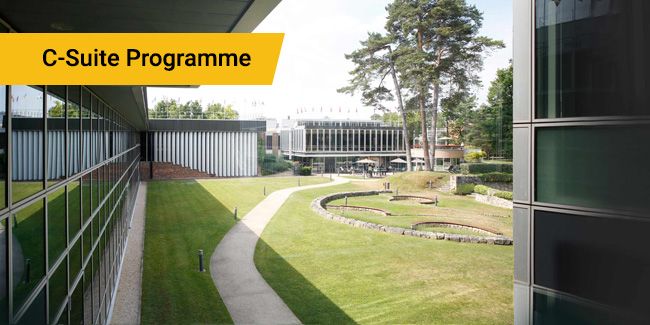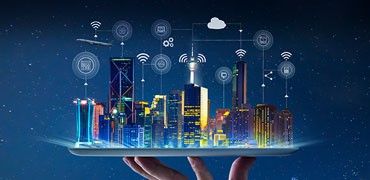How Brands Can Provide the Best Customer Experiences in the Phygital World

When we took our first road trip after the pandemic, we left 30 minutes before we planned to. This was to account for the delay we expected at our favorite McDonald’s outlet that was always packed on weekends because it was placed right at the entry to the freeway. But, when we reached there, we were pleasantly surprised to see people ordering by themselves on self-service kiosks which had cut the mad rush and made the ordering process so much more organized. This is a digital customer experience at a physical store. In short, it is a glimpse of the phygital world we are about to explore in this blog.
But, let’s understand the concept of phygital in more depth first.
What Does ‘Phygital’ Mean?
As the semantics of the word suggests, ‘phygital’ means a combination of ‘physical’ and ‘digital’. Essentially, you are trying to craft a digital customer experience that mimics the feel of the physical buying process while eliminating the inconveniences of a brick-and-mortar store. To illustrate with an example, when you walk into an Amazon Go store, pick up what you need, and walk out without a physical checkout, you are essentially shopping phygitally. You are picking up things from a physical store but you are checking out digitally using a number of cameras and sensors that automatically deduct the amount you owe the store.
Why do we need phygital experiences?

Now, some among you might question why we need phygital experiences at all in a world that is increasingly becoming digital. In fact, an end-to-end digital customer experience is what brands should aim at achieving. Besides, weren’t all the brick and mortar stores on a decline? Data seems to suggest otherwise. A 2021 State of Consumer Behavior report indicates that 33% of shoppers prefer brick and mortar stores as they can touch and interact with products. Moreover, 61% are more likely to spend more when shopping at an actual store. In fact, you might be startled to know that US retailers opened twice as many stores in 2022 as they had closed down in 2021 owing to the pandemic.
The consensus is that people like shopping at physical stores. But they do not like the hassle of lengthy queues or waiting for their turn to talk to a sales representative at physical stores. Hence, brick and mortar stores are here to stay as are places like airports and fast-food joints. But now marketers will have to provide a digital customer experience at these physical spaces.
What does digital customer experience in the phygital world look like?
In an ideal phygital world, you should be able to walk into a store if something on the shop window catches your eye, try it on or interact with the product, scan a QR code to get its details online and order it to your home directly or checkout digitally before walking away with product. When you decide to go out for dinner, you should be able to book your table online. When you reach the restaurant, you should be able to scan a QR code for the menu and order directly on the app. So, now you can also allows you to pay your bill digitally. At airports, you should be able to check-in yourself and your luggage at a kiosk that requires minimum to no human interaction. The catch phrase here is ‘self-service’ or ‘self-checkouts’ that save time and make the process of buying seamless.
What are the pillars of a great phygital experience?
According to a Forbes article titled Phygital — What Is It And Why Should I Care, the all new digital customer experience in the phygital world has five main pillars. And they are:
#1: Phygital experiences are often omnichannel
Once you opt for a phygital experience, you will have to rise above channel bifurcation and look at your brand more holistically. Consider it to be a whole organism instead of an amalgam of different processes and channels that work in silos. Cross-channel collaboration is key to the success of the phygital model.
#2: Consumer psychology is key to the phygital world
The consumer is at the center of the phygital ecosystem. To be good at phygital marketing models, brands need to understand the consumer’s psychology quickly and in depth.
#3: You might have to relook at your revenue model
Like it was expressed in the first point, a holistic approach to channels and the revenue model is necessary for a phygital system to work. For instance, when the brands will have to train their in-store personnel to understand and operate phygital systems. This means, both the personnel and the technology work in tandem to get you sales. They cannot compete.
#4: A commitment to phygital requires trial and error, as well as compromise
Whenever there is a disruptive new way to do things, it shakes up organizations from the bottom up. So, the leadership needs to be ready to reach a compromise between channels and approaches for this model to work
#5: Phygital is Work in Progress
It is not possible for a brand to wake up today and become completely phygital tomorrow. It is a new concept that requires gradual change. In fact, the very definition of a phygital experience is changing every day.
How can brands choose to take the phygital route?
The best way to make digital customer experience in a phygital world seamless is to understand its five important pillars. Next, you need your leadership and mid-level management to have a deep-seated understanding of breakthrough customer experiences. For this, Kellogg’s Leading With Behavioral Science: Creating Breakthrough Customer Experiences guides you through a unique curriculum that prepares you to apply customer science insights together with traditional marketing strategies to maximize customer value at every stage of the customer decision journey.
Write to content@emeritus.org for content collaborations.
















